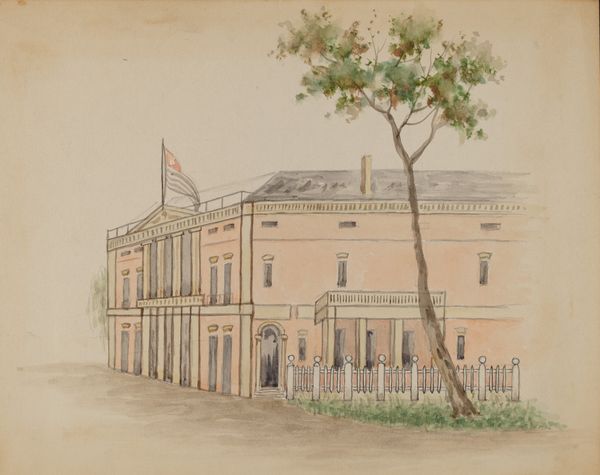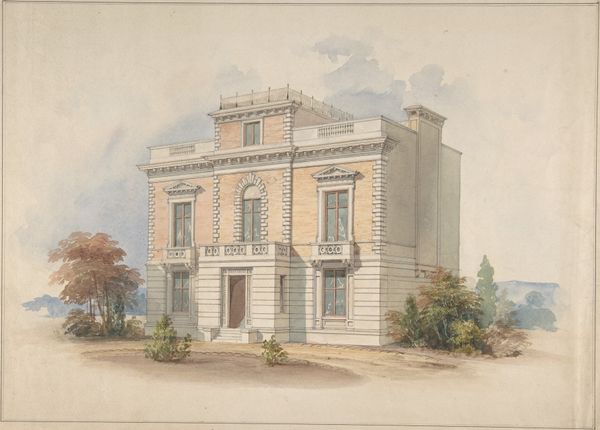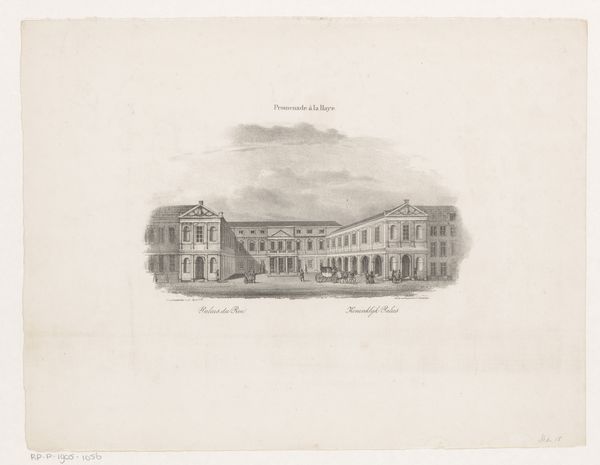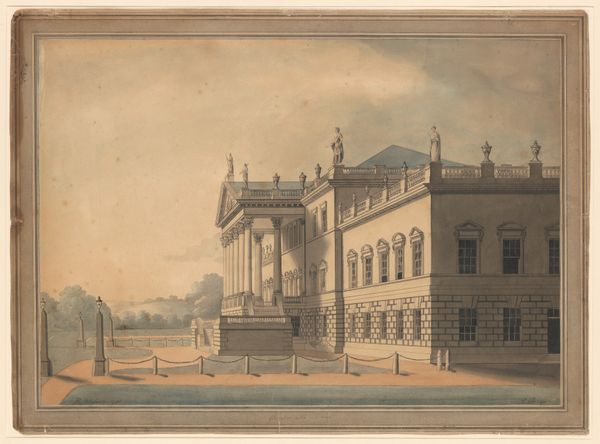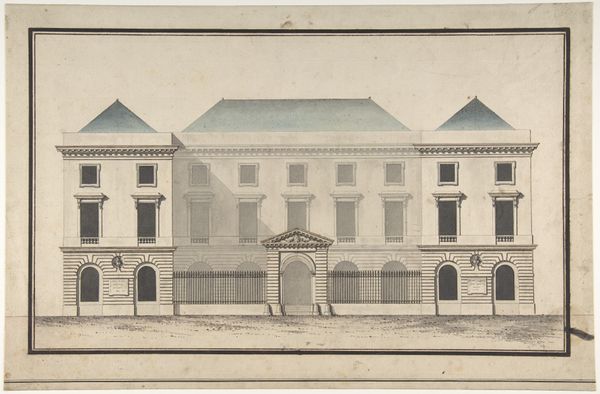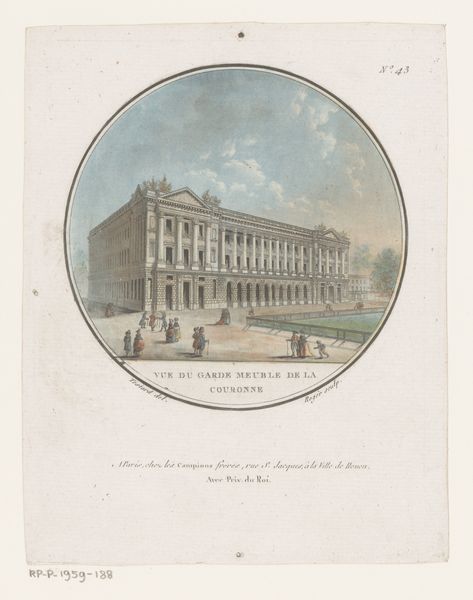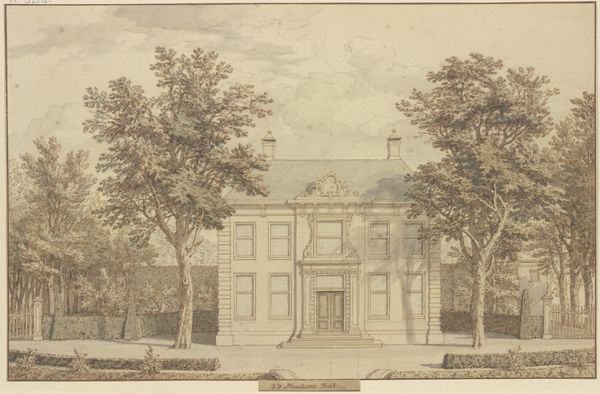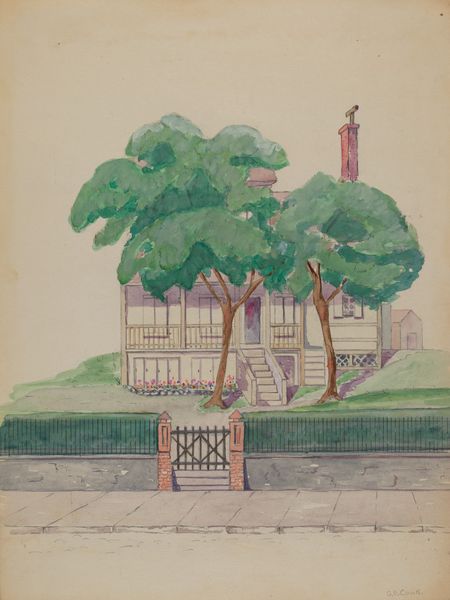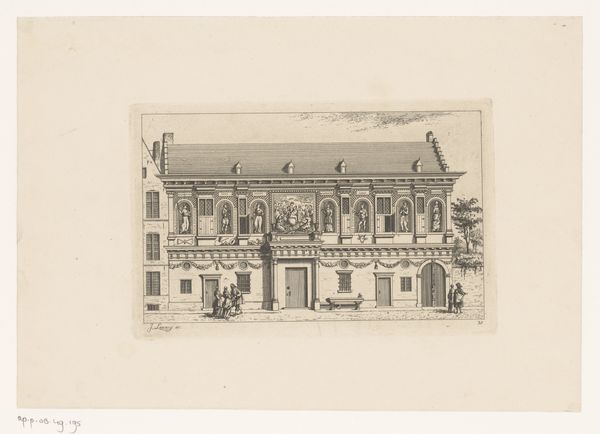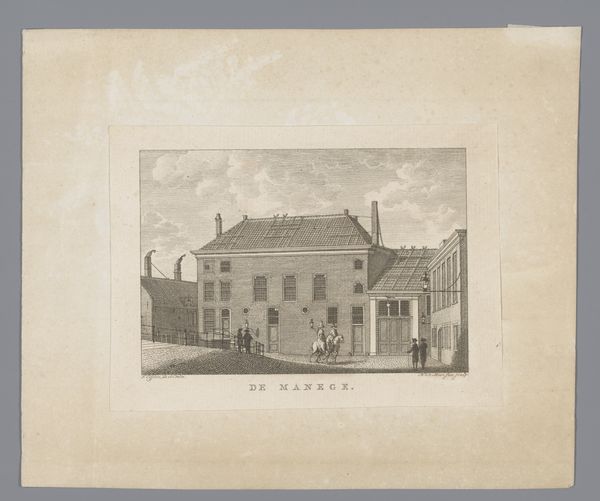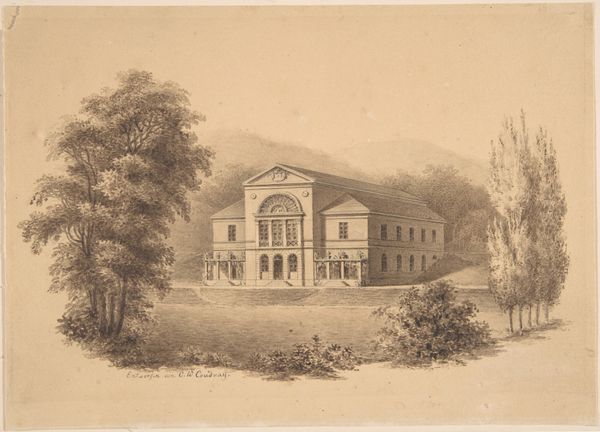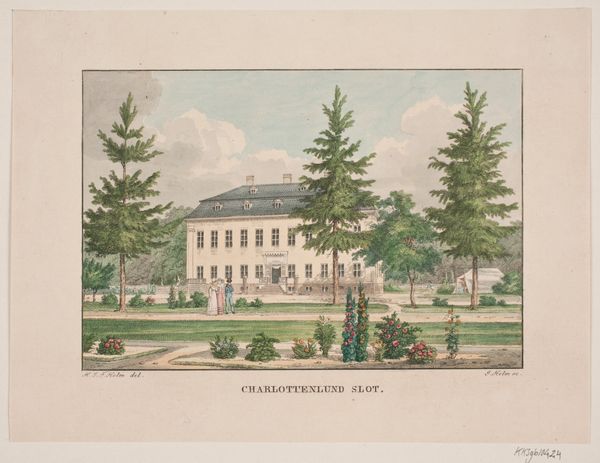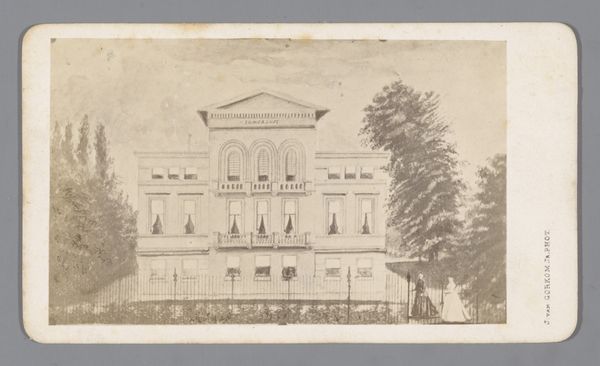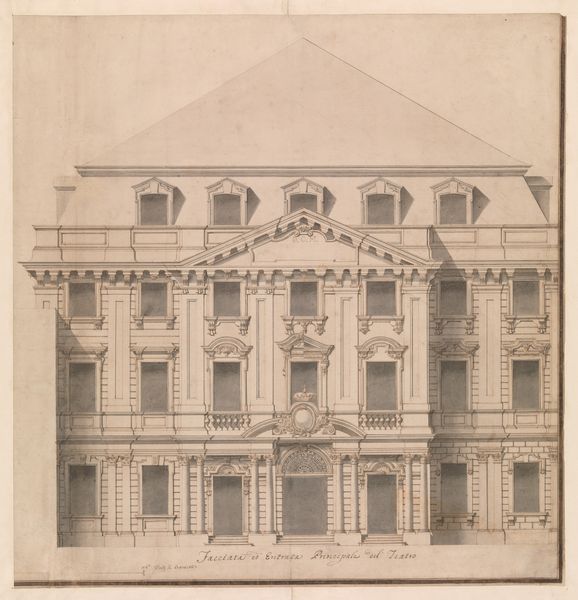
drawing, plein-air, watercolor, architecture
#
drawing
#
plein-air
#
landscape
#
watercolor
#
cityscape
#
watercolor
#
architecture
#
realism
Dimensions: overall: 23 x 30 cm (9 1/16 x 11 13/16 in.)
Copyright: National Gallery of Art: CC0 1.0
Curator: Right, let's take a look at this watercolor drawing simply titled "House." It's attributed to an anonymous artist and is estimated to have been created between 1935 and 1942. It's a delicate rendering using watercolor on paper and appears to have been done "en plein air". Editor: It has a wonderfully faded dreaminess about it, doesn't it? The colors are so soft. Makes me think of those slightly out-of-focus memories from childhood summers. A grand building trying to hide under the pastel veil of time. Curator: Indeed. The technique certainly lends itself to that nostalgic feeling. I find the composition interesting, as well, in its representation of civic architecture and an implied social hierarchy. You have this large, imposing house – presumably belonging to someone of importance – positioned quite prominently, almost guarded by that picket fence. Then, in the background, a distant church spire which makes a visual echo. Editor: It feels very controlled. The perspective lines, the careful placement of the tree… everything leads the eye, but with a strangely static feeling. It's like a stage set waiting for the actors to arrive. The muted tones give it a very understated power. Curator: Perhaps that is because these architectural representations of power, or their symbolic weight in a community. How the layout of the building, its visual language speaks to an order or structure beyond the personal. Think about what buildings stand for, as it were. Editor: Maybe that's what feels so eerie about it – a beautiful stage but totally silent and motionless. What I find myself wondering is, which aspects were real and true to the site, and which parts were re-imagined through art making? Curator: A fruitful question! While the work seems relatively representational – even realist, with those architectural details meticulously observed, there's undoubtedly an artistic license at play. The flattening effect of the watercolor simplifies forms and enhances certain aspects, suggesting the architecture is a symbol with real ties to the real world but presented through the vision and memory of a person. Editor: It’s subtle. Not shouting its story, but whispering secrets, right? This watercolor manages to feel both timeless and incredibly specific all at once. Curator: Absolutely, and its ambiguity, I suspect, it is precisely where its strength lies, allowing us as viewers to project our own associations and reflections onto the scene. It makes me curious to explore the historical archives about civic life during that period. Editor: It inspires dreams and memories, the feelings as vivid as life. Makes me want to pack my paints and find a similar scene just to record.
Comments
No comments
Be the first to comment and join the conversation on the ultimate creative platform.
